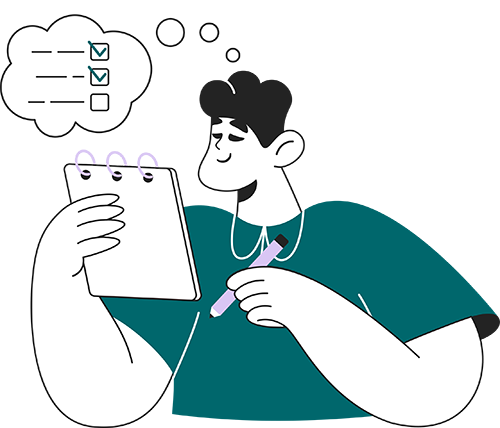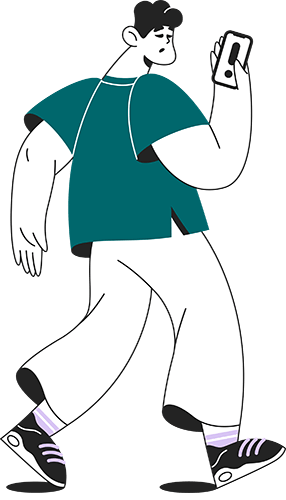Free NSW Driving Test
Updated 2026
Stepping into the driver’s seat for your NSW driving test feels like excitement and nerves. Sitting at the threshold of change, this moment symbolizes your shift from a novice learner to an adept motorist.
Your Complete Guide to Acing the NSW Driving Test
 Embarking on this path signifies the aim to succeed and the evolution into a vigilant and self-assured motorist.
Embarking on this path signifies the aim to succeed and the evolution into a vigilant and self-assured motorist.
You’ll learn how to navigate through each stage of the NSW driving test, starting with what makes you eligible and ending with mastering key skills for success. We’ve got you covered from understanding essential documents to acing practical assessments.
Let us guide you through booking your test, preparing effectively, and ultimately celebrating when you receive your passing result. Ready? Let’s dive in.
Understanding the NSW Driving Test Structure
The journey to getting your driver’s license in New South Wales feels a bit like assembling a jigsaw puzzle. But don’t worry; we’re here to help you see the big picture without losing any pieces.
This approach helps solidify knowledge not just for passing but also for becoming a safe driver long-term—consider it piecing together corners and edges first since they frame everything else.
Eligibility Criteria for the NSW Driving Test
To kick things off, make sure you meet all eligibility requirements. This includes holding your learner's permit for at least 12 months, logging 120 supervised driving hours if under 25 (less stringent for older applicants), and being at least 17 years old. Think of this as gathering all your puzzle pieces before starting.
Beyond age and experience, there's an emotional readiness no checklist can cover. Ask yourself if you feel confident behind the wheel—because confidence is key when navigating through traffic or executing that perfect parallel park.Essential Documents and Requirements
Gathering your documents is next. You'll need proof of identity, residency in NSW, and completion of necessary logbook hours (for those under 25). These must be organized well ahead of time to avoid any last-minute scrambles that could derail your test day plans.
This step is akin to having a clear workspace ready for puzzle-solving; everything needs its place so you can focus on fitting each piece together seamlessly.Preparing for the Driver Knowledge Test (DKT)
Navigating the Driver Knowledge Test transcends mere obstacles; it embodies a chance to exhibit your mastery over vehicular regulations and protective measures. Leverage online practice tests available through resources like Service NSW, which mimic real test conditions.
Familiarize yourself with various question formats. Understand why answers are correct or incorrect. Treat every practice attempt as though it were the real deal.HOW TO SUCCEED
Eligibility Criteria for the NSW Driving Test
Before you hit the road and make your mark, knowing if you’re in the clear to book that all-important NSW driving test is key. It’s like knowing if you have enough gas before a long drive; it makes sense.
Gearing up for success starts with ticking these boxes off one by one—know what’s needed so when it’s time to book that slot, you’re as ready as can be.
Age Requirements
Learner Licence Holders
Paperwork Perfection
Essential Documents and Requirements
You are gathering your paperwork before the driving test NSW, which feels like preparing for a secret mission. You need the right documents to ensure smooth sailing—or, in this case, driving. Diving into the essentials, here’s what you should gather.
Your Proof of Identity
First up, proving you are who you say you are is key. The Roads & Maritime Services (RMS) needs solid proof. This means bringing along your passport or birth certificate. A full list of acceptable ID forms can be found on the Service NSW website. Remember, no ID equals no test.
Are they mixing things up with multiple IDs? Make sure they match up; mismatched names can throw a wrench into your plans faster than a flat tire.
Your Logbook and Application Forms
If you’re under 25, that logbook filled with recorded hours is golden—make sure it’s completed correctly and signed off by your supervising driver(s). Application forms must not be overlooked for everyone hitting the road towards their license. Filling them out beforehand saves precious time on test day.
The specifics of these forms change as often as Sydney weather does—they’re available at any RMS office or online via the RMS website.
Fees Paid Upfront
Last but certainly not least, Fees aren’t fun but are necessary evils in this journey toward freedom on four wheels.
You can pay these through Service NSW centers or online—a quick visit to their site will let you handle this from home, so there are fewer hurdles between you and that pass slip.
Here’s where being prepared pays off: nobody wants surprises when they’re already nervous about parallel parking.
Preparing for the Driver Knowledge Test (DKT)
Understanding the Format
Gathering Your Study Materials
Tips from Those Who've Passed
A SIMPLE, FUN WAY TO PREPARE
Mastering the Hazard Perception Test (HPT)
The Hazard Perception Test (HPT) is like a video game, but one where your skills can save lives. It tests how well you spot hazards in real-time driving scenarios. Here’s how to beat it.
Understanding HPT Format
 The HPT throws various traffic situations at you through clips. You’re asked to click the mouse when you see a hazard developing. Think of it as “Where’s Waldo?” but with potential road dangers instead of a striped-shirt guy.
The HPT throws various traffic situations at you through clips. You’re asked to click the mouse when you see a hazard developing. Think of it as “Where’s Waldo?” but with potential road dangers instead of a striped-shirt guy.
To get familiar with what awaits, check out this guide on the NSW government site. This resource sheds light on hazards you should be vigilant about and provides sample queries that closely simulate the actual test conditions.
Tips for Spotting Hazards Early
Hazards are sneaky; they don’t have warning signs flashing above them. But there are clues if you know where to look:
- Pedestrian crossings near schools: Always expect kids to dart across.
- Blinking brake lights ahead could mean someone’s slowing down or stopping suddenly.
- Cars at intersections: Watch their wheels, not just the car body – moving wheels suggest pulling out into traffic soon.
Acing Your Response Time
Your reaction time must be Goldilocks-perfect – not too early or too late. Clicking before a hazard fully develops won’t score points because, technically, nothing’s happened yet. Waiting till it’s obvious may be too late in real life and on this test. Practice makes perfect here: use online simulators, which offer free HPT-style quizzes designed to sharpen your instincts without any risk involved.
Tips for Passing the Practical Driving Assessment
So, you’re gearing up to take on the NSW practical driving assessment and feeling jittery? That’s normal, but let me tell you something: passing this test is more about being prepared than anything else. Here’s how to ensure your driving skills are top-notch during showtime.
Stay calm and focused on the road ahead—literally and metaphorically speaking—and remember why you’re doing this: freedom awaits beyond that pass mark.
Know Your Vehicle Inside Out
Practice Makes Perfect - And Legal.
Nail Those Maneuvers
Booking Your NSW Driving Test
So, you’re ready to take the plunge and book your driving test in New South Wales? Great. This step is like lining up at the starting block in a race. But instead of running shoes, you need key information and a few clicks or taps.
Online Booking: The Fast Lane
The Service NSW website is the most straightforward way to book your test. Think of it as ordering pizza; select what you want, pay for it, and get confirmation from your couch. You’ll need your license details handy and be ready to choose a date that suits you best.
If tech isn’t your thing or you prefer talking to a human being, phone booking is still an option. A quick call to Service NSW can get everything sorted out for those who find comfort in hearing another person’s voice on the other end of the line.
Paperwork Sprint: Don’t Get Disqualified Before Starting
Imagine showing up without sneakers at that starting block—no good, right? Arriving without the necessary documents is similar to taking your driving test. Ensure all required paperwork comes with you on the testing day; this includes proof of identity and any other forms specified by Service NSW.
Last-minute surprises are fun at birthday parties, but not so much here. Double-checking document requirements will let you focus on nailing that parallel park rather than scrambling over missing papers.
After Passing Your NSW Driving Test
Getting Your Provisional Licence
Your P-plates are calling. After passing, you'll swap your learner's licence for a provisional one. This lets you drive unaccompanied but with some conditions. First off, make sure to apply at Service NSW. It's where all the magic happens, from paperwork to getting that shiny card.
You can choose between two types of provisional licenses - P1 (red P-plate) and, later on, P2 (green P-plate). Each has its own set of rules like speed limits and passenger restrictions. For instance, no mobile phone use at all while driving is allowed under both licenses.Navigating New Driver Conditions
Gaining independence on the road means embracing a whole new set of duties. Speeding isn't just frowned upon; it could quickly send you back to square one. Sticking within speed limits is crucial because demerit points hit harder when you're on a provisional license.
Also, remember: zero alcohol tolerance means exactly that—zero drinks if planning to drive. Even small amounts can affect your reaction times and decision-making abilities behind the wheel. The journey doesn’t end after passing your test; it shifts gears into becoming a safer driver every day out there on the roads of New South Wales.